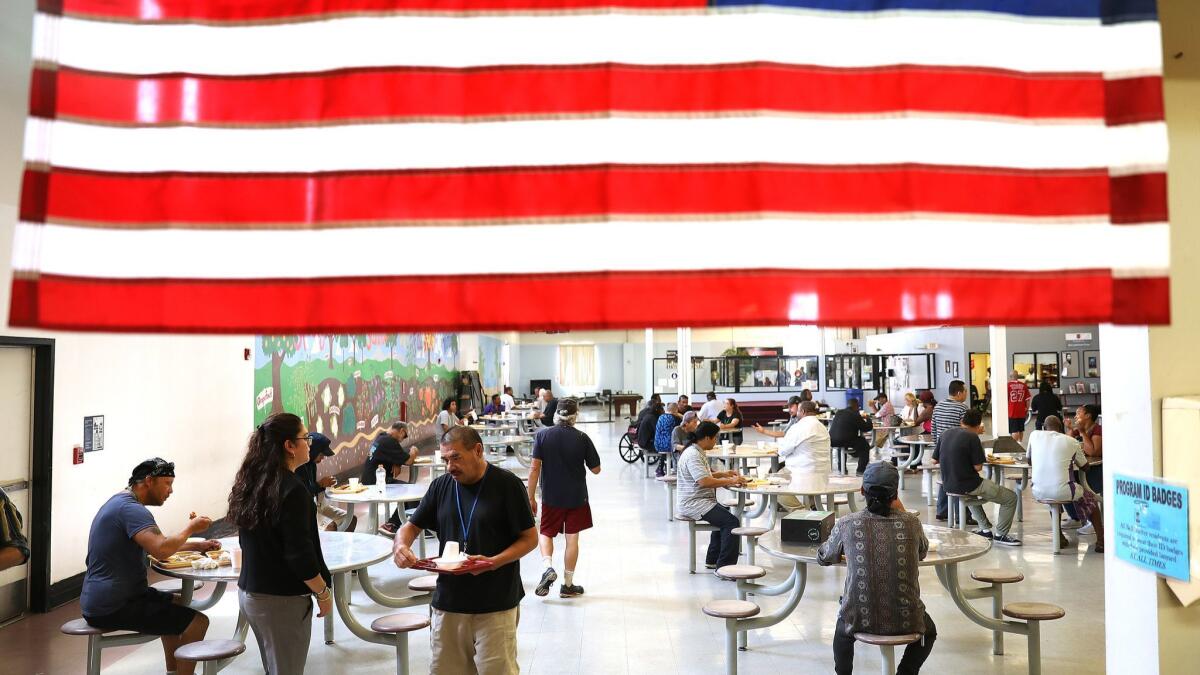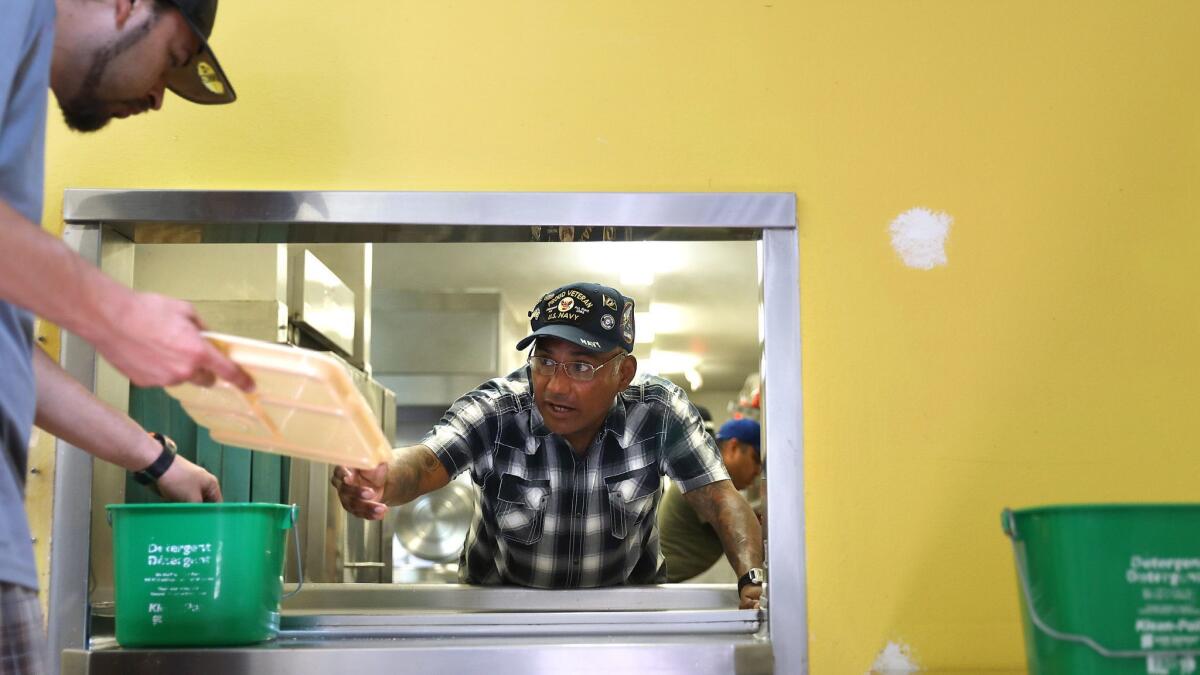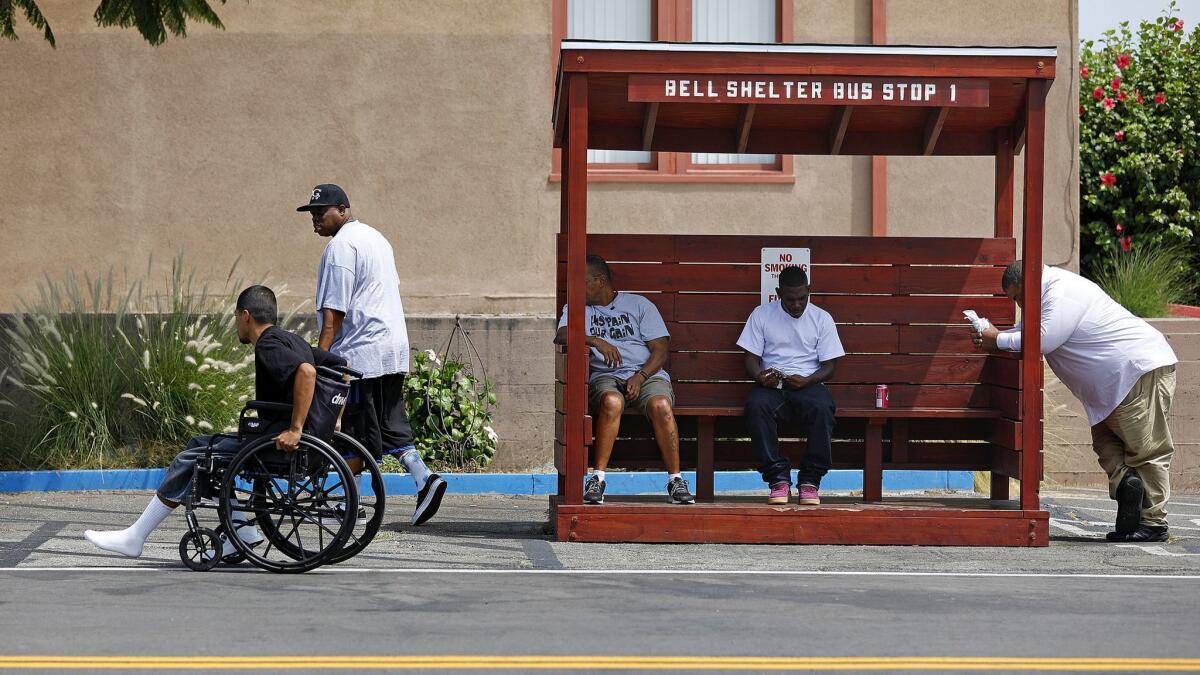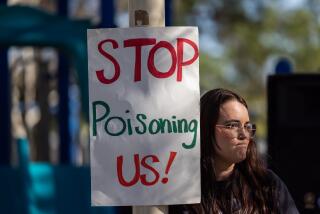Bell still paying price for corruption scandals as ‘dumping ground’ sparks environmental worries

Over the last decade, Bell has worked hard to emerge from the massive municipal scandal that made the city’s name synonymous with graft and corruption.
But a 14-acre industrial yard along the 710 Freeway remains a stubborn symbol of the bad old days, and what to do with the site has sparked an emotional debate touching on Bell’s corrupt past.
The city used to own the land. But it was forced to sell it in 2013 to help pay back money lost to the extravagant salaries and other misdeeds of ex-City Manager Robert Rizzo and other former officials in a 2010 corruption scandal. Rizzo and seven others were eventually convicted on multiple criminal charges.
Now, a cement company wants to turn the property into a gravel yard, a plan fought by environmentalists and others who say the dust generated by the project would pose a health risk to the public. There is special concern about a nearby Salvation Army shelter and an urban farm, which has become a point of pride in the working-class community.
The gravel yard has become a new rallying cry for some in Bell, with activists saying the city should have done more to block it.
Bell Scandal: A Times Investigation »
Bell “has been a dumping ground for a long time,” said Mark Lopez, executive director of East Yard Communities for Environmental Justice, a group that sued to block the plan. “Companies and developers target our communities because they can get away with it and they have for a long time. What they’re asking you right now is so that they can get away with it again.”
A trial date for the lawsuit has been scheduled for December.

Officials recently approved a tentative settlement agreement that attempts to address the concerns of the environmental group while also allowing the Mexican construction materials giant Cemex to move forward with its plans.
Environmentalists argue that the Cemex development was approved under false pretenses and that the environmental review failed to take into account how much a gravel yard would change the city, especially compared to the business park that was originally slated for the site.
“A gravel terminal that rail imports 500,000 tons of gravel a month has far more extensive dust, aesthetic [impacts] and truck trips than described or studied in the 2013 Bell Business Park environmental impact report,” the lawsuit states.
City officials acknowledge the approval process was flawed. They said a former city official approved the project in December 2016. The following year, employees began to issue permits, not realizing that the proper guidelines for reviewing the gravel yard proposal weren’t followed.
“Instead of going before the city’s design review committee, the project was forwarded to the architectural board, which consisted of only staff members and no city officials,” David J. Aleshire, city attorney for Bell, said during a recent City Council meeting.“That was improper. I was not aware of all of that at the time and the project received approvals.”
The legal battle over the property is a reminder for some of Bell’s past under Rizzo, the former city administrator who not only was making $1.5 million at the time of the 2010 scandal but was later convicted of misappropriating public funds.
The scandal, coupled with the bond debt, forced the city to sell two parcels of land, including the 14-acre property purchased by Pacific Industrial of Long Beach.
Cemex leased the land and in 2016 filed permits to construct its gravel yard project. Last year, as the project neared completion, officials with the city learned it had improperly issued Cemex construction permits without going through the full review process.

Environmentalists filed their suit in January and called for an injunction on the project, halting construction and triggering months of negotiations.
Lopez said Cemex was taking advantage of the city’s mistake and was trying to “to get a sweet deal by skirting the environmental process.”
Steve Lytle, Director of the Salvation Army’s Bell shelter, located near the site, said trucks would cut through the shelter and an urban farm because easements have not been secured for the project. He said about 500 people, including workers, would be affected by the plant.
“Our dining hall is one building, so everybody has to go to that building, so they’re moving all around,” Lytle said. “These are people in wheelchairs, they’re on crutches, they’re in walkers. They are veterans with PTSD, people with mental illnesses.”

The people who run the nearby 1.5-acre GrowGood urban farm are not only worried about their produce but the sustainable model they are trying to create for homeless shelters across the country. The nonprofit provides jobs and volunteer opportunities for the homeless and the region.
“We got to prove it here. Our donors are betting on us to do it, hiring folks, growing produce at the farm and selling locally,” said Brad Pregerson, co-founder of GrowGood.
“We grow food for the shelter and the community,” he added.
City and company officials said they are trying to address these concerns.
As part of its agreement with the city, Cemex will return to the design review board with additional mitigation measures, including covering all equipment and trucks leaving the site. They also plan to hire locally and provide annual payments of $400,000 to the city that can be used for more services. Those payments are set to increase in three years.
The city said a federal easement that could allow trucks to travel along a different route was possible, but they would need to secure it, a process they said could take time.
“If city leaders want to acquire jurisdiction over this portion of the road, the congresswoman is happy to discuss the matter with them,” said a spokesperson for Rep. Lucille Roybal-Allard (D-Downey).
Supporters of the project include the Bell police union. The group said the additional city revenue generated by the project could go toward improving public safety. Other supporters include Cemex employees who, like their company, said they take the community’s concerns seriously.

“This project is going to create jobs in the city of Bell; it’s going to create added revenue,” said Dan Olvera, a general manager of aggregates with Cemex. “We’re spread out across the country and we have farms and produce sections adjacent to several of our properties and operations within the United States, and those farms and produce sections are flourishing.”
For now, it appears the gravel yard is going forward. The City Council approved the plan on a 3-2 vote and a judge denied environmentalists’ request for the injunction.
The situation has some residents angry and questioning when their city will fully recover from the scandal. For years, city leaders enriched themselves with lavish salaries at the same time as services were cut and City Hall charged outsized fees and taxes to working-class residents.
Since the scandal, the city has slowly repaired its financial health, moving from the brink of bankruptcy. Other reforms have been adopted as well. But to some, more work is needed.
“The city of Bell and the government is not going to flourish until we start applying ... what the rule of law is and respect the processes we have in place,” since Vice Mayor Ana Maria Quintana.
Times staff writer Melissa Etehad contributed to this report.
ollow @latvives on Twitter.
More to Read
Start your day right
Sign up for Essential California for news, features and recommendations from the L.A. Times and beyond in your inbox six days a week.
You may occasionally receive promotional content from the Los Angeles Times.







